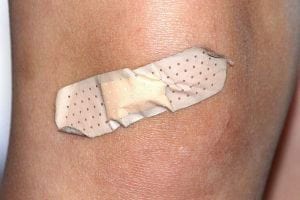The most common inherited bleeding disorder, von Willebrand disease, appears more likely to cause problems for juvenile males living with the disease than juvenile females, according to a study published in the October 2019 issue of the American Journal of Hematology. Differences in von Willebrand disease type, as well as gender, seemed to impact the overall life experiences of those with this genetic disease.
Study Details
The observational study encompassed 2,712 children between the ages of 2 and 12 living with the disease. Researchers used a surveillance database of those living with von Willebrand to compare the difference in experiences with the disease and treatment methods based on age, gender and type of von Willebrand disease. The study consisted of a roughly 50/50 split between male and female juvenile patients, 76.3% of whom were living with type 1 VWD, 12.5% living with type 2 VWD and a mere 4.4% living with type 3 von Willebrand disease.
Study Results
The authors of the study concluded that juvenile male patients living with Type 3 VWD were more likely to experience bleeds than juvenile females, and the age of the first bleed was observed to be lower.
Although no quantifiable or significant difference in quality of life or well-being status was observed across children with von Willebrand disease, Children with type 3 von Willebrand disease were noted as statistically more likely to use mobility assistance than children with type 1 or type 2 VWD.
Von Willebrand Disease Basics
Von Willebrand disease is a genetic bleeding disorder. Usually asymptomatic, the disease is caused by a faulty gene responsible for a protein, von Willebrand Factor, that helps blood clots form, aids platelets in adhering to each other, and helps platelets aggregate together. Symptomatic VWD is seen rarely in just 1 out of 1000 adults and children in the population.
The disease is classified into three distinct types. Those living with type 1, the mildest form, have reduced amount of the protein. Those with type 2 experience difficulties because the factor that helps create the protein is less active or functional in the body. Those with type 3 have a complete lack of von Willebrand Factor.
Other Noted Differences Among VWD Patients
The October 2019 study also noted that those with a diagnosis of type 3 VWD were normally diagnosed earlier than those with type 1 or type 2. The average age at diagnosis was just under a year old for male patients and at one and a half years old for female patients. Study authors made note of the significance in how patients with the disease bleed differently is of importance, as “continued vigilance of care may improve outcomes for children with VWD.”
Study Significance
Those identified as at risk of experiencing more bleeds, earlier bleeds, or needing additional aid can help doctors, parents, and caregivers alike improve the quality of life and well-being of adolescents living with von Willebrand disease. Although usually asymptomatic, those with the disease or those with a child or loved one living with the disease should be aware of the risks posed by age, gender and type.
Because the study identified juvenile male patients living with type 3 von Willebrand disease as most at risk for bleeds and needing more assistance getting around, children in that demographic may need to be monitored more closely than their female type 3 counterparts or those of any sex living with type 1 or 2 von Willebrand Disease.
Even so, the experiences of those living with von Willebrand are highly variable and individual to each person. Thus, the study results can only act as a generalized recommendation to keep a closer eye on boys with type 3 von Willebrand Disease and not a comprehensive, end-all be-all care guide or treatment protocol for every child living with VWD.
By Caitlin Seida from In The Cloud Copy








